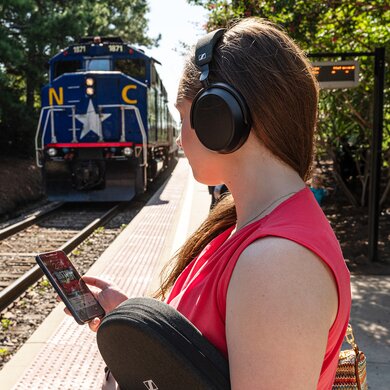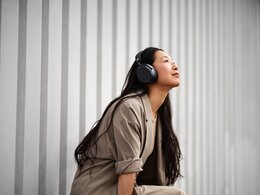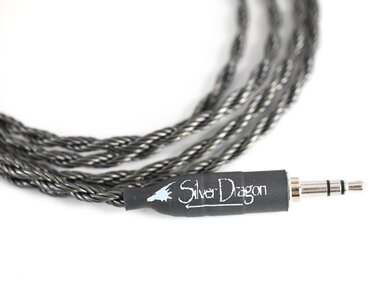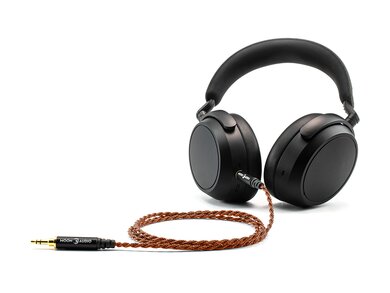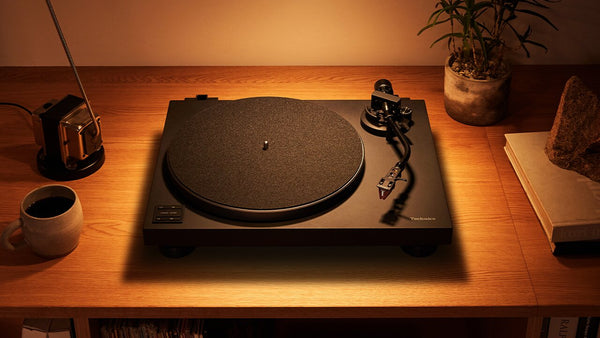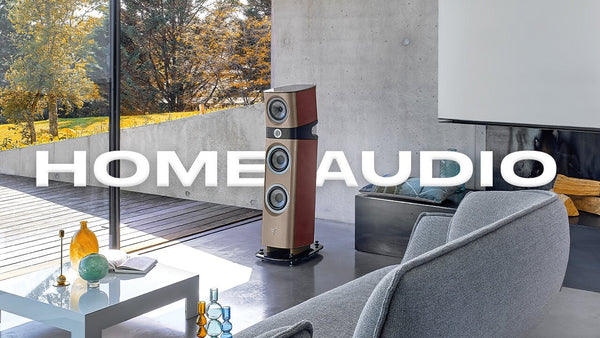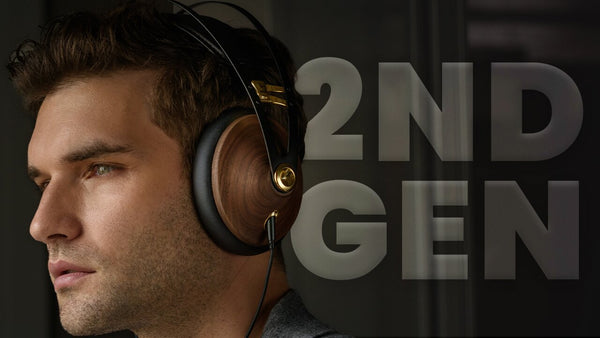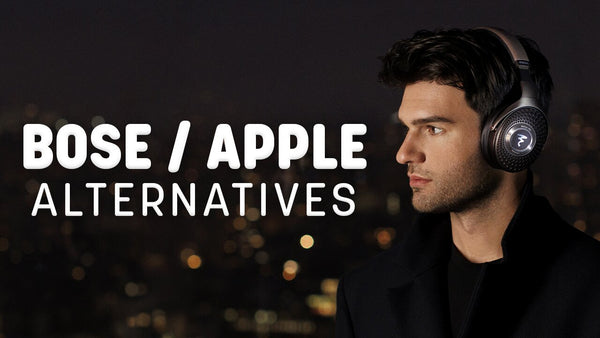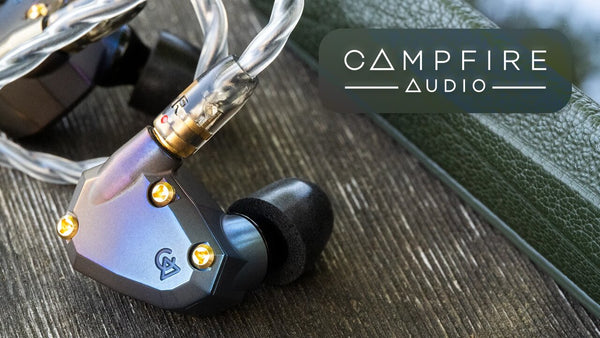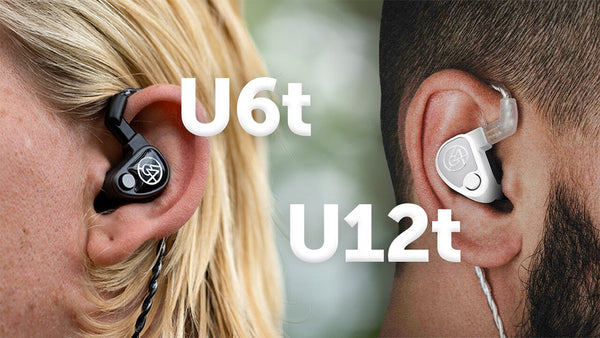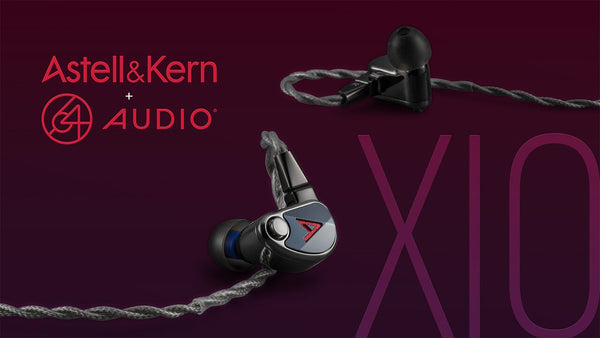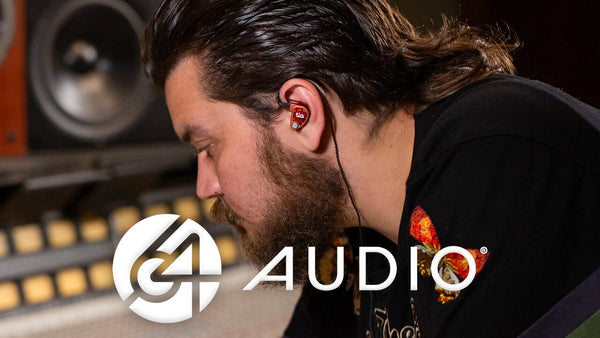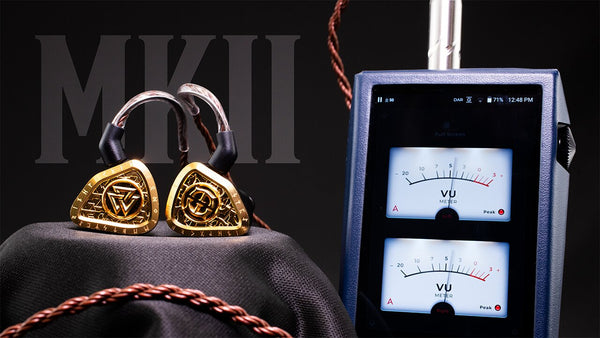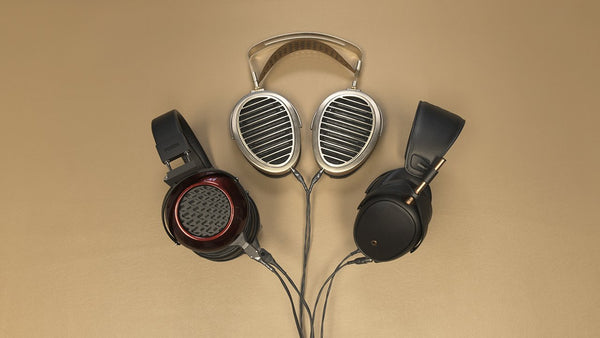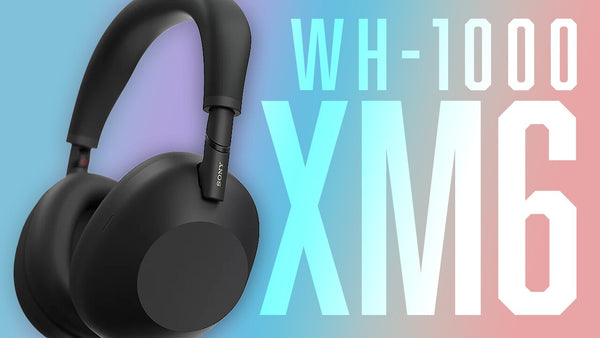Best Noise-Canceling Headphones for Airplanes and Travel

Peace and Quiet in a Noisy and Hectic World: Here Are The Very Best Headphones for Travel
As we navigate the bustling chaos of modern air travel, finding a moment of peace and tranquility can often feel like an elusive luxury.
The constant buzz of jet engines, the chatter of fellow passengers, and the ambient noise of the cabin can all converge into a cacophony that seems to envelop us during our journey. Heaven forbid you get a seat right behind or in front of a screaming baby.
I've been there, folks. It is not an enjoyable experience.
However, amidst this symphony of sounds, there exists a remarkable innovation that has become a cherished companion for many travelers: noise-canceling headphones for airplanes, airports, and many other types of travel.
These ingenious devices have transformed the way we perceive air travel, offering a sanctuary of silence amidst the turbulence of the skies. With this amazing modern technology, you now have the option to have peace and quiet whenever and wherever you want.
In this article, we embark on a journey to explore the importance and popularity of noise-canceling headphones.
But don't be misguided, noise-canceling headphones aren't just for air travel. Consider them for your daily commutes, whether that's on a bus, subway, taxi, or in your car. The best headphones for planes are also often the best headphones for all types of public commutes and longer-distance travel.
Maybe you're embarking on a family road trip in a tightly packed car where a moment of peace is hard to find. Whatever your case may be, these are the best picks for your everyday life. We cover traditional over-ear headphones, the best noise-canceling earbuds for airplanes, and other effective options – all of which deliver high-quality listening experiences.
We'll delve into how these technological marvels have become indispensable tools for travelers seeking comfort, peace, and uninterrupted immersion in their favorite music, podcasts, or audiobooks while soaring above the clouds.
Whether you're a seasoned globetrotter accustomed to long-haul flights or a casual flyer embarking on a weekend getaway, join us. We’ll uncover the myriad benefits and considerations of using noise-canceling headphones to enhance your air travel experience (and offer a few recommendations in the process).

PROS
- Great sound quality and dynamics
- Class-leading ANC on both Sony and Sennheiser models
- Comfortable fit and styling
- Gesture controls and lots of features
- Price
CONS
- Not quite audiophile-grade sound (but close)
- ANC introduces "noise" into your sound by design
ANC Technology Has Roots in Aviation
Sony didn't make the first noise-canceling headphone, but it was a Sony headphone that sparked the creation.
Wait, what?
As it turns out, Dr. Amar Bose (founder of the same-named audio company) was using the first Sony headphone, the MDR-3, during a long flight in 1978. He was disappointed to hear lots of ambient noise that diminished the enjoyment of his music. So, he began working on a design that would become the first commercially available noise-canceling headset, the Bose Aviation Headset.
Noise-canceling technology was actually developed for use in aviation a couple of decades prior. Dr. Lawrence Fogel, a pioneer in the field of cybernetics, is also credited with inventing the concept of noise-canceling headphones in the 1950s. Noise-canceling systems were created to reduce noise for pilots in the cockpit area; to help make their communications easier; and to protect their hearing.
The technology has come a long way, with noise-canceling headphones for planes now targeted toward consumers who both need and want to block outside sounds.
From the airplane passenger who wants to get some shut-eye on a loud flight to the home office worker who needs to block household sounds to the frazzled apartment dweller who wants to enjoy music without hearing their neighbors arguing, noise-canceling headphones have numerous consumer applications.
How Do Noise-Canceling Headphones for Airplanes and Other Applications Work?
Nowadays, noise-cancellation (or noise reduction and noise isolation) is an advanced technology integrating microphones and special circuitry into headphones. Microphones are placed inside the ear cups to pick up ambient or background noise and external sounds that cannot be blocked passively.
The circuitry inside the ear cups then takes the signal from the microphone, tracks the frequency and amplitude of the incoming wave, and creates a 180-degree out-of-phase wave associated with the noise. This out-of-phase signal is then amplified into the headphones along with the music, thus effectively “canceling out” the ambient noise by destructive interference.
This allows the normal audio to continue to be amplified, unimpeded.
There are two types of noise-canceling technologies: active and passive. Active noise-canceling (ANC) essentially means that the device needs a power source to work, such as a rechargeable lithium-ion battery. Passive noise canceling means that the device itself can block out noise on its own, without an additional power source.
Sony and Sennheiser have become hands-down leaders in ANC headphones and earphones, with the Sony WH-1000XM5 and new WH-1000XM6 headphones and Sennheiser Momentum 4 headphones regularly topping lists of the best wireless headphones.
What are Some Factors to Consider when Choosing Noise-canceling Headphones?
- Noise-Canceling Technology: Understand the type of noise-canceling technology used in the headphones. There are generally two types: active noise cancellation (ANC) and passive noise isolation. ANC headphones use microphones to pick up ambient noise and then create sound waves that are the exact opposite (anti-noise), effectively canceling out the external noise. Passive noise isolation relies on the physical design of the headphones, such as earcup padding and tight seals, to block out noise.
- Sound Quality: Look for headphones with good sound quality that aligns with your music preferences. Check for balanced audio with clear highs, detailed mids, and impactful bass. Some noise-canceling headphones may sacrifice sound quality for noise cancellation, so it's essential to find a balance that suits your listening needs.
- Comfort and Fit: Comfort is crucial, especially during long flights. Look for headphones with plush ear cushions and an adjustable headband. Over-ear headphones generally provide better comfort for extended wear, but some on-ear options can also be comfortable. Ensure the headphones have a secure fit to prevent them from slipping off during movement. The build quality of the latest Sony and Sennheiser headphones is also top-notch, with excellent memory foam, hours of battery life, water-resistant (earbud models), the ability to take phone calls, and more.
- Battery Life: Consider the battery life of the headphones, particularly for long flights. Most noise-canceling headphones are rechargeable and offer varying levels of battery life. Look for models with extended battery life to avoid running out of power mid-flight. Some models also offer quick-charge features for convenience.
- Portability and Design: If you travel frequently, you'll want headphones that are portable and easy to carry. Foldable designs, like the Sony WH-1000XM6 wireless noise-canceling headphones, or compact carrying cases, are ideal for travel. Additionally, consider the weight of the headphones, as heavier models can become uncomfortable over time.
- Connectivity Options: Check the connectivity options of the headphones. Most noise-canceling headphones are wireless and use Bluetooth technology for connectivity. Ensure compatibility with your devices and look for models with stable Bluetooth connections. Some models also offer wired connections as an alternative. Sony and Sennheiser both offer headphone jacks as alternatives to wireless connection options.
- Additional Features: Consider any extra features that may enhance your experience. This could include built-in controls for adjusting volume and skipping tracks, voice assistant support, ambient sound modes (to let in outside noise when needed), and multipoint Bluetooth connectivity (allowing you to connect to multiple devices simultaneously).
- Brand Reputation and Reviews: Finally, consider the reputation of the brand and read reviews from other users. Established brands often have a track record of quality and customer satisfaction. User reviews can provide valuable insights into the real-world performance and durability of the headphones.
One thing I want to point out when it comes to effective noise-cancellation and air travel: You want to look for a noise-canceling headphone that does well to cancel out both low and high frequencies of the internal noise of the plane's cabin. The engine noise primarily comes across through the lower frequencies (the rumble of the engines, constant drive, and vibrations through the plane itself). Canceling out the higher frequencies will help take care of passengers talking around you, the occasional screams from a baby, and the excruciating sibilance of the plane's intercom system. In our various testing of ANC headphones and numerous product generations over the years, we found that Sony and Sennheiser do it best. Bose does well at only the lower frequencies, and Beats provides lackluster performance in comparison.
Alternative Headphone Styles
Closed-Back Headphones: Great for Keeping Your Music to Yourself
When it comes to listening outdoors, it’s a good idea to have some closed-back headphones due to the noise isolation. You don’t necessarily want to have a clear window to the world around you. That noise – whether it be the train, plane, traffic, or people talking – will diminish the quality of your audio.
The term “closed-back” refers to the fact that the headphone cups are fully sealed. They have no opening or venting like “open-back” headphones, which are more susceptible to outside noise. The closed-back design of the ear cups helps to keep the music in and the noise out.
Admit it. A little bit of you dies inside when you’re on the plane or subway, and you can hear the music screaming from the headphones of the person sitting or standing next to you. Your first instinct is to ask if this person has any consideration for the people around them. The second is a concern for their hearing if they have to listen to their music this loud. Don’t be that person.

The Closed Back Headphone Style: Just the right fit for music listening that’s intimately detailed, especially on the go. The most “intimate” headphone style for detail-oriented music fans. This is the headphone style for fans wanting to feel the most connected with music made by their favorite artists.
Closed-back headphones are certainly the style of choice for going out and keeping your head in the music. There are many variations and features, including over-ear or full-size, on-ear, wired, wireless, noise-canceling, and IEMs.
The fit and comfort are just as important, too. So, it is important to tailor your portable gear based on how and where you like to listen to music outside of your home. If you’re pressed for space, IEMs are a great option as they take up hardly any room.
On-ear headphones are also smaller than full-size or over-ear headphones. Wireless headphones are a great convenience, but you also sacrifice some sound quality over wired options. Your headphones are just as unique as you are, so make sure you spend the time finding the right pairing, and your music will thank you.
IEMs: Small, but Mighty Sound In the Palm of Your Hand
In-ear monitors, or IEMs, are one of the best options for portable listening due to their great sound and small form factor. Technically, the term "in-ear monitor" refers to an earphone that is meant to be used as – and in fact was created to be – a tool for performing artists and recording engineers.
The earpieces that singers wear on stage are called “in-ear monitors.” They provide the singer with a direct source of sound and allow them to customize their stage mix. They also allow the singer to listen to backing tracks. IEMs have slowly replaced traditional stage monitors.
But earphones and IEMs are also very much enjoyed by audiophiles and music enthusiasts who enjoy the convenience and increasingly high-fidelity sound provided by this headphone type. They’re among the best headphones for plane travel because they can deliver exceptional noise cancellation and overall sound quality without taking up much space.

Both earphones and IEMs have an inherent convenience factor that traditional full-size headphones can lack, and that is portability due to their compact size.
Noise isolation is another benefit. The earpieces on IEMs and earphones go past your concha and extend into your ear canal, thanks to silicone tips attached to the nozzles. This design creates optimal noise isolation, allowing you to enjoy your music more clearly and at a lower volume.
It also makes your earphones less likely to fall out of your ears. Plus, most earphone packages offer different size tips to ensure you get the best, most comfortable fit possible.
For starters, earphones and in-ear monitors are the most portable headphone type. Small enough to fit in your pocket and discreet enough to wear without advertising that you're using them, IEMs are easy to wear while shopping, exercising, traveling, and more.
Another advantage is that IEMs can easily be worn during exercise, even high-impact activities like running. Because they sit snugly in the ear canal, you can be assured they will stay in place during a good amount of movement and jostling.
Sound Quality in the Best Noise-Canceling Headphones for Airplanes and Other Travel
The Sony Sound
Let's face it, these are not audiophile-grade headphones, and should not be approached as such. That being said, the WH-1000XM6 is one of the best-sounding consumer-grade headphones on the market. It offers studio-quality precision and the company’s most advanced noise-canceling technology for an immersive listening experience.
The HD noise-canceling processor, the QN3, is 7 times faster than the processor found in previous generations of this pair of headphones (the WH-1000XM4 and WH-1000XM5). Bottom line, there are significant sonic improvements in this new generation. These headphones deliver sound as the artists intended, capturing every nuance of the performance with balanced and pure sound.
Sony is known for fun and V-shaped sound signatures in their devices, which boosts low and high frequencies while creating a dip in the midrange. The XM6 doesn't make much of a detour from that. You know what they say: "If it ain't broke..."
The Sony tuning is great for most genres, and the soundstage is close enough that the XM6 puts you right in the action. It’s not going to replace your open-back planar magnetic cans, but it should be in every music lover’s arsenal as a daily driver. They’re an especially good fit for those on the move who want to tune out the world – or tune back in from time to time.
The Sennheiser Sound
Like most Sennheiser headphones, the Momentum 4 is "forward" sounding with "tight" responsiveness in the bass. The most analytical sounding of the bunch, the Momentum is more dynamic sounding than other Sennheiser headphones I've used in the pro audio spectrum.
A "tall" and "resolute" presentation, the Momentum's will feel more at home for audiophiles who are keen on the overall quality and fidelity of the music.
Sennheiser headphones are much more "audiophile" friendly in regards to sound and presentation, offering much more detail retrieval and a wider soundstage than Sony headphones and earbuds. The Sennheiser Momentum line has improved greatly in the noise-canceling arena, putting the ANC performance at least on par with Sony.
This is great news for those wanting a more analytical presentation for their music, but don't want to sacrifice the quality of noise canceling like you would find in earlier product generations. Detail-driven music genres like classical, jazz, alternative, and more will sound exceptional on the Momentum line of headphones and earbuds, but it's tailored to perform well with most music out there.
Sony vs. Sennheiser for the best noise-canceling headphones for airplanes: At least they're not Beats or Bose. We find that Sony and Sennheiser have a much more refined sound that is suitable for audiophile-grade listening. Better performance, features, codec compatibility for high-resolution music listening, long battery life, the list goes on and on.
Best Headphones for Travel and Noise Isolation: Recommended ANC Earbuds
Sennheiser Momentum True Wireless 4 Earphones
Introducing the Sennheiser Momentum True Wireless 4 Earphones, the latest innovation from one of the most trusted names in audio. These earphones are designed to provide an exceptional listening experience, combining cutting-edge technology with the renowned Sennheiser sound signature.
With features such as active noise cancellation, customizable touch controls, and an intuitive app for personalized sound settings, the Momentum True Wireless 4 Earphones offer a premium audio experience like no other.
Whether you're on the go, at the gym, or simply enjoying your favorite tunes at home, these earphones deliver ultra-crystal-clear sound and uncompromising comfort. That makes them the ideal choice for music lovers and audiophiles alike. The Momentum 4 earbuds are one of our top picks for the best wireless earphones/true wireless earbuds with ANC.
The Sennheiser Momentum True Wireless 4 noise-canceling earbuds redefine the benchmark for exceptional sound quality, comfort, and innovative features that cater to your individual listening preferences. Designed to be your ultimate audio companion, the Momentum True Wireless 4 is equipped with cutting-edge technologies like Auracast and LE Audio, setting the stage for a revolution in how we share and stream audio content.
Get ready to immerse yourself in thrilling sound, personalized just for you, with intuitive features like adaptive ANC and long-lasting battery life that keeps the music playing wherever you go.
Sony WF-1000XM5 Wireless Earbuds
The Sony WF-1000XM5 wireless earbuds are a standout choice in the competitive market of true wireless earphones. Boasting industry-leading noise cancellation, these earbuds create an immersive listening experience with a rich and balanced sound profile that delivers crisp highs, deep lows, and detailed mids.
The WF-1000XM5 earbuds also offer intuitive touch controls, long battery life, and seamless connectivity with Bluetooth devices.
Sony has completely revamped the design of the WF-1000XM5, making them smaller, sleeker, and more comfortable. Somehow, they even managed to pack more (and better) tech inside.
The driver redesign sounds dynamic and resolute - we're getting a lot more top-end clarity and tightening in the bass response from previous iterations. You can certainly hear the differences and improvements when A/B testing the XM5 with the XM4. It's night and day.
Although the app experience hasn't changed that much, it hasn't necessarily needed to. You have all the control and customization at your fingertips, and it makes for a great user and listening experience overall.
Sony continues to reign as king when it comes to high-end consumer audio. The WF-1000XM5 is the real deal, and if you're in the market for some incredibly premium earbuds with more features than you can shake a stick at, then look no further.
The Best Noise-Canceling Headphones for Airplanes and Other Travel: Recommended ANC Headphones
Sennheiser Momentum 4 Wireless Headphones
The Sennheiser Momentum 4 Wireless Headphones deliver an effortlessly smart user experience, excellent noise-cancellation, and immersive audio wherever you go. With its outstanding sound quality and its all-new design that perfectly combines exceptional comfort and streamlined style, nothing can get in the way of your listening pleasure.
The headset's Adaptive Noise Cancellation ensures you won't be distracted when you want to immerse yourself in your music, and the versatile Transparency Mode lets you hear your surroundings without removing the headphones.
But that's not all. Four noise-canceling microphones provide high-quality voice pick-up and automatic wind suppression for optimized calls and easier access to voice assistants.
The Momentum 4's outstanding battery life lets you enjoy up to 60 hours of playback time on a quick charge. The intuitive touch interface on the right ear cup provides effortless operation and easy control of music, calls, ANC, and voice assistants.
It also offers smart features like Smart Pause and Auto On/Off that anticipate your needs. Smart Pause automatically pauses and resumes playback when the headset is removed or replaced. Auto On/Off turns on when you pick up the headset and turns off automatically after 15 minutes of non-use.
The lightweight design, the padded headband, and the deeply padded ear cushions provide exceptional and long-lasting comfort. Premium fabric details highlight the discreet design to complement your style, and the ultra-slim hard case with a soft fabric cover makes it easy to carry on the go.
Sony WH-1000XM6 Wireless Noise-Canceling Headphones
The Sony WH-1000XM6 headphones rewrite the rules for distraction-free listening, making them among the best noise-canceling headphones for airplanes and many other uses. The most advanced processor controls 12 microphones for unprecedented noise cancellation and exceptional call quality.
With a newly developed driver, DSEE – Extreme, and Hi-Res audio support, the WH-1000XM6 headphones provide awe-inspiring audio quality. The XM series of headphones from Sony are smart devices in that they incorporate well into your day-to-day, and are smart enough to know how not to get in the way. The sound quality is top-notch, and the noise-canceling can't be beaten. But it’s the user experience and functionality that make the XM6 the best in show.
The cutting-edge driver does make for noticeable improvements in the sound quality. Better dynamics, more clarity, and just an overall upgrade to the presentation. The other thing that makes it a must-buy in our book is the greatly improved touch controls.
The XM6's responsiveness nails it. It's undoubtedly a great pick, a worthy upgrade, and objectively improved in every way. LDAC (codec also provides amazing wireless and spatial audio). Do you want the best noise-canceling headphones and wireless headphones on the market? The XM6 is the one.
Focal Bathys MG Wireless Headphones
Experience extraordinary sound without compromise in Focal's Bathys MG Wireless Headphones, the flagship evolution of Focal's acclaimed Bathys Headphone. These meticulously crafted ANC headphones represent the pinnacle of French acoustic engineering, combining Focal's exclusive magnesium drivers, sophisticated active noise cancellation (ANC), and premium materials in a stunning high-end over-ear design.
Engineered for discerning listeners who refuse to compromise on sound quality, the Bathys MG Bluetooth Headphones deliver a dynamic, immersive listening experience with rich, natural reproduction and remarkable detail across the entire frequency spectrum.
Whether you're navigating a busy commute or seeking sonic escape in a quiet moment, the Focal Bathys MG transforms every moment into an exceptional acoustic journey, rivaling competitors like Sony in the high-end wireless market. They’re without a doubt a top choice for the best headphones for travel, and for any time when noise-canceling is needed.
DAPs & DACs: The Traveling Audiophile's All-In-One
DAPs
“Why do you need a DAP when your phone can do the exact same thing?”
Let’s be clear: Your phone can’t do the same thing.
DAP stands for Digital Audio Player. You can call them portable music players, too. Think of the iPod – a DAP can do pretty much everything an iPod can, but better.
A DAP is usually a smart device, like a phone without the calling feature. It has a mobile OS like Android, has a high-end DAC, or digital to analog converter, and includes an amplifier for headphones – and wifi for streaming services like Tidal, Qobuz, and Spotify.

They also include Bluetooth for wireless listening via high-resolution codecs. DAPs are also play-ready, compatible with a bunch of different file types and sizes. They come with ANALOG I/O for headphones.
Yes. Headphone jacks. Crazy, right? So, they are all these things wrapped up into one portable high-fidelity package.
While it may be more convenient to just have your phone and some AirPods, you’re just not going to get any kind of high-resolution or high-fidelity audio. And, for those of us who don’t want to sacrifice our sound quality in the name of portability, the DAP is the perfect answer.
The tough thing is that there are DAPs of all shapes, sizes, DACs, amps, I/O, and price points out there, so it’s tough to know where to start if you don’t already have one.
DACs
DACs (digital-to-analog converters) are one of the easiest ways to drastically improve the quality of your music. We like to call them the Google Translate of your audio system, and as such, not all translators are equal.
They come in a plethora of shapes, sizes, chips, price points, and more. These devices take the data from the original sound and convert this digital data back to an analog signal. To do this, it converts the bits of data from the stored files into an analog electrical signal at thousands of set times per second, called samples.

The DAC outputs these samples into a wave that intersects at all the sample points. The more samples or data in general, the more accurate the original wave will be. Better sound quality is the result.
There’s no need to make it super complicated. The bottom line is that consumer-level devices all have built-in factory DAC chips. The quality of the converter chip most companies use for their devices is just not that great.
Most external DACs are far superior because they have one job: to convert digital signals to analog (and to do it well). That’s it. That’s all they do. Of course, there are differences from DAC to DAC, but the one thing they all have in common is what they were designed to do: to convert digital signals to analog.
The audio output from a standalone digital to analog converter is going to be drastically better than your built-in source device like a phone.
Dragon Cables
The wonderful thing about both the Sony WH-1000XM6 and Sennheiser Momentum 4 Wireless Headphones is that they include headphone jacks. Of course, despite being wireless and noise-canceling headphones, using them with cables is our preferred method. You'll get the best sound quality from a cabled connection, and, after all, this guide is all about the best noise-canceling headphones for airplanes and other noisy environments.
Our Portable Dragon Headphone Cables make the perfect pairing with these headphones. In my review of the WH-1000XM6, I paired the headphones with both a Silver Dragon and Bronze Dragon Portable Headphone Cable. I was surprised at the difference that each cable brought out in the overall sound of the headphones.
I would argue that both are great options, but if you’re more of the analytical listening persuasion, then the Silver Dragon Portable Headphone Cable will bring out a bit more detail and top-end sparkle. The Bronze Dragon Portable Headphone Cable helps to control the low-end weight and tighten it up. Both cables are a big boost over the included factory cable.
With the Sennheiser Momentum 4, you'll find that quality Sennheiser detail and analytical presentation. I paired the Bronze Dragon Portable Headphone Cable with this headphone to provide more body and warmth, thickening up the low end without sounding bloated.
It helped to round out the sound for a more balanced presentation that will appeal to most music lovers. The other nice thing about the Momentum 4 and the WH-1000XM6 headphones is that they can also be used with USB-C cables, giving the listener full access to uncompressed quality audio.
Connecting the headphones via USB-C cables allows the full transfer rate of high-resolution audio unimpeded by Bluetooth and wireless limitations. We highly recommend using our Black Dragon USB Audio Cable for both headphones in this blog. This is a perfect cabled solution for Android users, Apple iPad (iOS), and owners of the latest iPhone 15 (with a USB-C port).
Our HiFi Audio Dragon Cables bring out more of what you love in your music and audio gear. If you love your headphones but wish they had a bit more top-end sparkle - a Silver Dragon Headphone Cable would be a great option. If your USB cables keep dying - as many stock cables do - then check out our quality USB Audio Cables.
We say time and time again that materials matter, and our audio cables and custom geometries actually help to bring out those desired properties in your gear and music. We make tons of custom options for our customers, so that you can get the right HiFi Audio cable for your exact needs. If you have any questions, feel free to Contact Us and we'll be more than happy to help.
Generally, stock audio cables are manufactured with subpar materials, metals with impurities, poor geometries, and an overabundance of layers to make them look and feel like a fire hose. Inconsistency and lack of quality control in stock cables can lead to poor sound quality and a veiled sound vs. what the musician intended for you to hear and feel from the music.
Dragon Audio Cables are handcrafted with the highest standards and made to order according to your specific needs. At Moon Audio, we create a custom cable for you using the highest quality UP-OCC silver or copper conductors that can be manufactured. UP-OCC metals are void of impurities and are optimized for signal transfer and sound quality.
We have one of the largest collections of audio and headphone connection options available online, and we create limitless audio cable options depending on your specific gear and needs.
Why Dragon Cables?
You’ve heard the saying that a chain is only as strong as its weakest link, right? Well, the same applies to your brand-new audiophile-grade headphone or other audio components. The weakest link, in this case, is your stock audio cable or the cheap interconnects the manufacturer threw in the box just to get you up and running.
Why is the audio cable always an afterthought when it’s just as important as the rest of your system? At Moon Audio, we use the purest and best raw materials in our cables to unveil your music. We believe that materials matter, and your audio cables should have the same care and craftsmanship that manufacturers put into their audio components and headphones.
Audio cables are ultimately the connection to your music. The fact remains that cabling is often considered the last priority compared to the main product and a means to cut down the overall production costs. It’s as simple as that. Dragon Cables elevate every note – as if you were hearing your favorite music for the very first time.
Verdict: The Best Noise-Canceling Headphones for Airplanes
In the world of air travel, noise-canceling headphones are an absolute game-changer. These innovative devices not only provide a sanctuary of silence amidst the chaos of airplane noise but also play a crucial role in preserving the quality of your music in very loud environments.
By effectively blocking out the roar of jet engines, cabin chatter, and other ambient noise, noise-canceling headphones allow you to fully immerse yourself in your favorite tunes or podcasts. This not only enhances your overall travel experience but also ensures that you can enjoy your music with clarity and detail, even at high volumes.
Whether you're a frequent traveler or just someone looking for a more enjoyable flight, the best noise-canceling headphones are an essential tool for maintaining the quality of your music and creating a peaceful oasis in the midst of a bustling airplane cabin.
If you’re considering models like JBL, Samsung, Apple Airpods Max, Airpods Pro, Beats Fit Pro, Bose QuietComfort Ultra Earbuds, Bose QuietComfort Ultra Headphones, Beats Pro, and more, don’t. You’ll get much better performance and more features if you stick with Sennheiser and Sony. They are the best buy Bluetooth headphones (and in-ear headphones) in every way.
When it comes to noise-canceling headphones for air travel, the Sennheiser Momentum 4 and Sony WH-1000XM6 headphones (and earphone variants) stand out as top contenders. Both of these headphones excel at noise cancellation, creating a tranquil listening environment even amidst the roar of airplane engines and cabin chatter.
The Sennheiser Momentum 4 headphones and the Momentum True Wireless 4 Earphones boast excellent active noise cancellation that effectively blocks out external noise, allowing you to immerse yourself fully in your music. Its refined sound quality ensures that every note and beat is delivered with precision and clarity, making it a fantastic choice for audiophiles seeking a high-fidelity experience.
On the other hand, the Sony WH-1000XM6 headphones are renowned for their industry-leading noise-canceling technology. With adaptive noise cancellation that adjusts to your surroundings, it can effectively cancel out a wide range of noises, providing a serene listening experience.
The Sony WH-1000XM6 headphones also offer impressive sound quality, with rich bass, clear mids, and detailed highs, ensuring that your music sounds its best even in the noisy confines of an airplane cabin.
Both the Sennheiser Momentum 4 and Sony WH-1000XM6 headphones (and earbud variations) are equipped with features tailored for travel, such as long battery life, comfortable ear cushions, and intuitive controls.
Whether you prefer the sophisticated sound signature of the Momentum 4 or the cutting-edge noise-canceling technology of the WH-1000XM6, both options provide an exceptional audio experience that can elevate your journey.
So, when it comes to choosing noise-canceling headphones for air travel, these models are the perfect options to consider for enjoying your music in peace and clarity during your flights. Happy listening!



